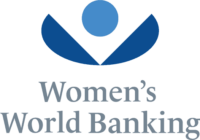These guides provide an overview of local capital markets and include key information necessary for international and local investors as well as microfinance institutions (MFIs) to understand and utilize local markets in an efficient manner. As capital markets in emerging economies deepen, MFIs are increasingly able to access them, and obtain low-cost local currency financing to expand their portfolios. This also provides many attractive investment opportunities for international investors. However, many international investors do not have adequate knowledge to participate in local capital markets transactions in a particular country. Furthermore, many MFIs that are seeking to access their own local capital markets may not be able to properly communicate the advantages/challenges to an international investor. Women’s World Banking, in partnership with Barclays, is producing a comprehensive series of capital markets guides for emerging markets. The primary goal of these guides is to identify steps and potential obstacles that international investors face during participation in local investment instruments in countries with well-developed financial markets. In addition, each guide includes a thorough examination of the individual country’s microfinance sector, capital markets, banking sector, restrictions on capital flows, restrictions on foreign holdings, tax laws, currency risks, and securities regulations required to invest there.
Women’s World Banking is pleased to release the fourth guide in the series: Kenya. The three earlier guides included Brazil, Colombia and Mexico. The guides focus on countries where Women’s World Banking has identified growing local capital markets, where its network members are positioned to access the capital markets and where international parties have an interest to channel their investments. Finally, the guides seek to educate local MFIs about their local capital markets as well as the processes and preferences sought by international investors, ultimately allowing these institutions to expand their operations and outreach.
This publication is available in the following languages:
Brazil:
Colombia:
Kenya
Mexico:



